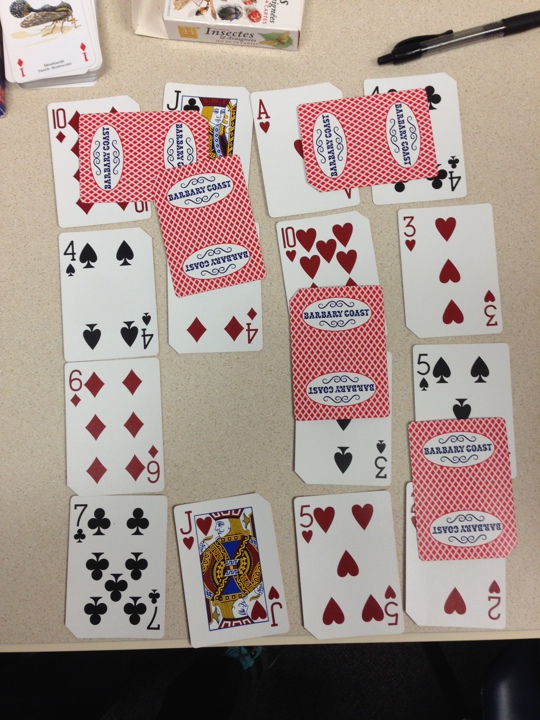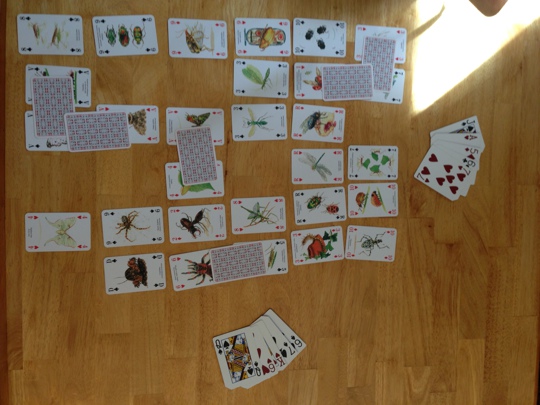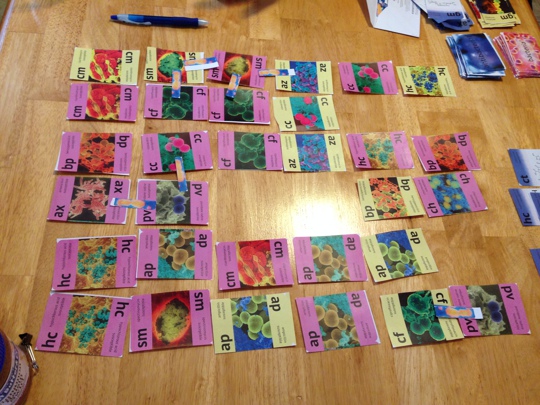If you're using your browser's reader mode, refresh the page while in reader mode to load all content.
game that teaches middle schoolers about bacteria
what’s up with bacteria?
Public health policies often require the cooperation of the public. Sometimes, citizens are hesitant to cooperate due to misconceptions of the science behind policies. Educational strategies can prevent these harmful misunderstandings.
Our group wanted to design a tabletop game to teach middle schoolers about bacteria. After reading scholarly articles about public (mis)conceptions of bacteria, we established learning objectives for students:
- The same type of bacteria can be helpful or harmful in different circumstances
- Killing harmful bacteria may cause collateral damage to helpful bacteria
- Bacteria may gain different traits after conjugation
- Controlling bacteria is an ongoing battle that requires teamwork
mechanic development
Before coming up with the core system, we looked at games handling similar subject matter and research on games for science education. We were encouraged by the positive educational outcomes reported by researchers, and admired the cooperative decisionmaking and experimental invitation that some games exhibited. We then brainstormed by fiddling with physical parts of existing tabletop games until we stumbled upon a system of matching cards to remove bacteria that seemed promising.
literature review
goal
Learn about effectiveness of games as a tool for learning.
action
Read academic research on using games to teach science in classroom settings.
insights
Games can increase engagement with material and improve students' test scores.
competitive analysis

tangible brainstorming

goal
Develop a system that abstractly represented the educational subject matter.
action
Played around with a hodgepodge of board game pieces and used them to create possible scenarios for the game.
result
Landed on the concept of a modular board of bacteria that are added and removed.
refining the gameplay
We successfully created gameplay that mirrored the concepts we wanted students to learn about, but initial playthroughs revealed a lack of interesting decisionmaking. We continually tweaked and tested our game until it was engaging even when played over and over. We then invited others to playtest the game to evaluate the clarity of our rules, fun factor, and learning outcomes.
internal playtesting

goal
Discover and repair imbalances in game mechanics and nonengaging moments.
action
Repeatedly played game, debriefed experiences, made experimental changes.
result
Balanced bacterial propagation versus antibacterial resources. Simplified phases of a player's turn.
external playtesting

goal
Uncover confusing or unsatisfying parts of gameplay. Evaluate if game is fun and/or educational.
action
Observed participants play a couple rounds without our supervision, then interviewing them about their experience.
insights
The game was interesting and fostered cooperative problem-solving. Rulebook needed to be simpler regarding possible player actions.
about the game

Conjugation is cooperative game in which players attempt to eliminate as many bad bacteria from the board while keeping as many good bacteria as possible. Since some bacteria are bad and some are good, discretion must be taken when eliminating bacteria, since an antibacterial might also eliminate good bacteria. Rather than winning or losing, the players receive a score at the game’s end, reminding them that managing bacterial outbreaks is a ongoing effort that doesn’t end.
learning goals
good or bad

learning objective
The same type of bacteria can be helpful or harmful in different circumstances.
gameplay
Some bacteria cards, despite being the same strain, can be helpful or harmful.
antibacterial discretion

learning objective
Since some bacteria are bad and some are good, discretion must be taken when eliminating bacteria, since an antibacterial might also eliminate good bacteria.
gameplay
Players must be careful not to also remove good bacteria when removing bad bacteria.
evolution

learning objective
Bacteria may gain different traits after conjugation.
gameplay
Bacteria conjugate with one another, forming super-colonies that require specific combinations of antibacterials. Good bacteria that conjugate with bad bacteria become bad as well. Players must carefully plan their limited supplies of antibacterials to prevent bad super-colonies from becoming unremovable.
ongoing battle

learning objective
Controlling bacteria is an ongoing battle that requires teamwork.
gameplay
Instead of winning or losing, players receive a collective score at the end based on the number of good and bad bacteria remaining. This gives players incentive to play again to beat their high score.
design considerations
easy to store

Since the board is made up of cards, all the pieces fit in the space of less than 3 decks of playing cards. Teachers can easily store multiple copies for their entire class.
print & play

The entire game and rulebook can be created from a 18-page PDF that teachers can print and have their students cut out. Laminating the sheets or putting cards inside card sleeves can preserve them for future school years.
next steps
- Evaluating the game in a classroom setting as part of curriculum instead of isolated playtests.
- Developing reflection questions to help students retain and clarify the learning objectives.
want to play?
Email me to request the files.